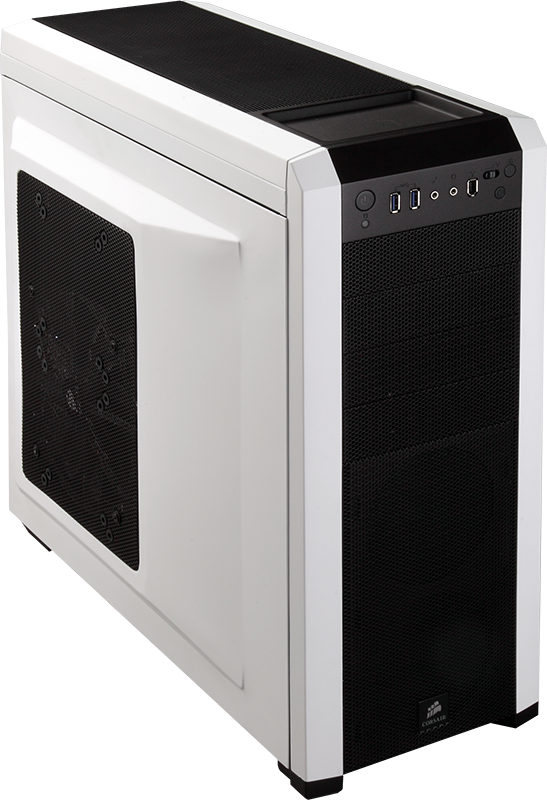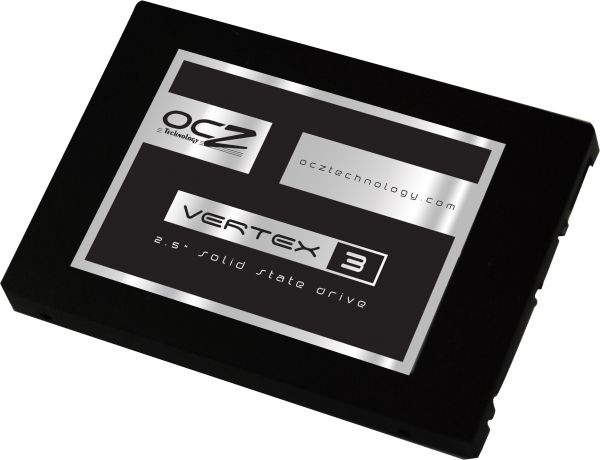Holiday 2011 Midrange System Buyer's Guide
by Zach Throckmorton on December 6, 2011 12:00 AM EST- Posted in
- Guides
- AMD
- Intel
- Sandy Bridge
- Llano
- Holiday 2011
- midrange
- NVIDIA
The Intel Core i5-2500K CPU
Intel's Sandy Bridge architecture based Core i5-2500K needs little introduction at this time. Almost a year after its release, it remains unrivaled in terms of performance, power consumption, enthusiast-friendly overclockability, and price. Anand reviewed the CPU earlier this year, and I summarized the Sandy Bridge CPU and chipsets in a previous buyer's guide. You can also check Bench for detailed metrics on the 2500K's performance. Simply put, you can't buy a better processor for the money, and its performance for its cost makes it a tremendous value.
The components
I've recommended the Biostar TZ68A+ in previous guides and it continues to be my go-to Z68 chipset-based LGA 1155 motherboard. I continue to have great experiences with it (like no DOA boards, knock on wood), and the many I've put in systems continue running without issue. Its feature set is good, its performance is great, and its cost is comparatively low. Perhaps its only negative is that it has fewer than average rear USB ports; you might need a USB port dock if you'll be attaching a lot of peripherals to it.

For the graphics card, we're highlighting the Radeon HD 6850. Prices of cards based on this GPU have fallen over the last few months to lows of around $130 after rebate, where it offers unbeatable performance for the price. The GTX 460 1GB is its closest NVIDIA competitor, performance-wise, as you can see from Bench. The two cards are very evenly matched, but the Radeon HD 6850's lower power consumption and lower price tag make it the better buy. Succinctly, it can play even the most demanding games at high resolutions at acceptable frame rates. AMD's HD 7000 series should come out in the not-too-distant future, but we can't share any details on where those will rank right now.
Because Sandy Bridge CPUs are less responsive to faster RAM than AMD's Llano APUs, the Core i5-2500K system requires nothing more than standard budget DDR3, in this case, an 8GB kit. For storage, we've opted to go with a slightly less expensive but still solid performing SSD, OCZ's Vertex 3. 60GB is enough space for your OS and applications, and like the $800 AMD build, the Samsung F3 1TB HDD is a lot of space for big game and media libraries.
Though neither the i5-2500K nor the Radeon HD 6850 are power hogs, Corsair's Builder Series CX500 offers a lot of value for midrange builders at the $50 (after rebate) price point. It's more than capable of powering this system, and leaves room for future upgrades that might be more demanding on the power supply (e.g. a Core i7 CPU, faster video card, or a second Radeon HD 6850 for CrossFire). Dustin reviewed the Corsair Carbide 500R recently and after getting my own hands on one, I agree with his conclusions: it has excellent thermals and acoustics, it's extremely easy to work with, and it's well-built. Note that the white version is in the components list below, but it's also available in black.
| Component | Product | Price | Rebate |
| Processor | Intel Core i5-2500K | $220 | |
| Motherboard | Biostar TZ68A+ | $95 | |
| Video card | Gigabyte Radeon HD 6850 | $150 | -$20 |
| RAM | Kingston 8GB DDR3 1333 | $35 | |
| SSD | OCZ Vertex 3 | $100 | -$20 |
| HDD | Samsung F3 1TB | $150 | |
| Power supply | Corsair Builder Series CX500 | $60 | -$10 |
| Case | Corsair Carbide Series 500R | $140 | -$10 |
| Optical drive | LITE-ON iHAS324-98B | $20 | |
| Operating system | Windows 7 Home Premium 64-bit (OEM) | $100 | |
| Total: | $1070 | $1010 |
Summary

The Intel system outlined above is about $200 more expensive than the AMD system on the previous page. That's a 25% cost increase from the A8-3850 APU rig. Is it worth it? As you can see from the Bench comparison, the only aspects of performance where the A8 wins are idle and load power consumption. As for actual computing performance, it's not even close. Similarly, the discrete Radeon HD 6850 is leagues ahead of the on-die APU's graphics. But it is critically important to understand what the benchmark numbers mean in reality. For a casual computer user, the A8-3850 is more than adequate. However, it is not an enthusiast's chip, whereas the i5-2500K is essentially the entry-level enthusiast's processor. If you perform more demanding tasks like pro-am or professional graphics or video editing, or you're a hardcore gamer, you should spend the extra $200 and go with the Core i5-2500K system.
For those who use their PC to work hard and prefer to play elsewhere, and don't want to break the bank on near-bleeding edge performance, we've got you covered on the next page.











57 Comments
View All Comments
shivoa - Tuesday, December 6, 2011 - link
My Lian Li PC-60 is a great ATX case from 11 and a half years ago. Thank God we never migrated to BTX or I might have had to worry about buying a new box to put my PC in.It has no concerns with the current length of PCI-E cards, has a fully removable back and motherboard tray design that makes working with it a pleasure, and the dual 80mm front, single read + PSU exhaust isn't the most cutting edge design but it can still do the job (and over the years I've done some refinement of the air flows to help the case keep cool and quiet). Yes, the PSU it top mounted so the design is a bit more top heavy but the general design is just fine and shows what a long term purchase a good case can me.
Will we still be using ATX in 11-12 more years? I doubt it, but you can't look at the past and say it invalidates purchasing a case with a long term view.
Ananke - Wednesday, December 7, 2011 - link
Get a Lian Li. Very few, if any, can compare.For a workstation, I would recommend PC-90. For a budget choice PC-9F or K9.
intel 2500k is good for Adobe and video processing, if you have the money get the 2600k and Z68 Asus board. Get 16GB RAM, it is cheap anyway. More RAM is better for RAW files postprocessing.
kmmatney - Tuesday, December 6, 2011 - link
It would be real useful if the Anandtech GPU Benchmark app included on-board graphics, as well as older cards. It's a pain to try and see if the Llano GPU will be better than an old Radeon X850, or how it compares to an HD4830.mrjoltcola - Tuesday, December 6, 2011 - link
Agree; for that matter it would help if GPU bench would allow comparison across all cards, old and new. I frequently think in terms of "8800GTX" performance when comparing something new, and frustingly I cannot do that in GPU Bench.Burticus - Tuesday, December 6, 2011 - link
Interesting read... but I could put together that A8 system for under $500 compared to your $800 just by glancing at the online sales today. But I understand this is a guideline and you can't reflect sale prices in realtime.I would not go the $140 case/power supply route with that one though. A8 is screaming "bargain power" and as such I'd be looking at a smaller/cheaper case. Microcenter has the Thermaltake V3 for $28 after MIR.. this is a very nice small case. Add a 500 watt Thermaltake TR2 power supply for $35 after MIR. That is a nice small case with a decent power supply for $63. Just one example of many....
One more thing... why not include a Phenom II x4 / x6 "going out of business" option? Retailers are practically giving them away now. Microcenter has Phenom II X4 850 for $59 and X6 1055T for $119 (with a free mobo).
It's a bad time to be buying mechanical hard drives, but for the budget systems I don't feel SSD is the answer. You can still score a 500gb 7200rpm sata drive for $75ish or cheaper if you get refurb/reconditioned. That price is over double what it should be, but still compared to a $80 64gb SSD offers better value.
Just my opinion.
Dug - Tuesday, December 6, 2011 - link
The Intel system could of used the same power supply and case that you used in the AMD build, bringing the price even closer.You don't mention any overclocking, so you could save another $30 on the cpu.
And I can't imagine recommending the OCZ. Just get a Crucial M4.
The power supply you recommend is also on the shit list on Newegg for doa and failures.
frozentundra123456 - Tuesday, December 6, 2011 - link
Just cant see spending 800.00 for a Llano system when 200.00 more can get a much superior CPU and GPU. If using Llano I would want the system to be much cheaper. I still think that the graphics, while good for an integrated unit are just too mediocre for an 800.00 system. I mean, my 2 year old 9800GT that I got on sale for 70.00 is probably faster. But I am looking at the system from a gaming standpoint. If you dont game, I suppose the APU is good enough, but if you dont game, even the HD Sandy Bridge graphics and an i3 2120 might be good enough.bhima - Tuesday, December 6, 2011 - link
Sure, you'll boot up faster and programs will load faster but for those that actually want to game on their system, an SSD does literally NOTHING for their gaming experience. I'd rather have an extra $100 to spend on a better video card, like a 6950 or 560 ti. SSDs are nice, but if you are on a budget, and you like to game, the SSD is much less important than a strong video card.antef - Wednesday, December 7, 2011 - link
You said..."AMD's HD 7000 series should come out in the not-too-distant future, but we can't share any details on where those will rank right now."
Does this mean you have details but can't share them due to NDA, or are you just saying you don't yet know where those will rank just like the rest of us. The timing of the release of those cards really makes the difference about whether I build over the holiday or not.
cjmurph - Wednesday, December 7, 2011 - link
You state the $1000 build as suitable for CAD work. Not happening. Two 1080p monitors running microstation and intelligence graphics turn to water, flickering and arrifacting like mad.Any chappy dedicated card will fix it, but it won't work as it is.